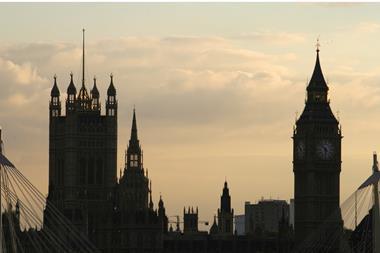UK government concerns over the economic impact of allowing continued transfers between defined benefit (DB) and defined contribution (DC) funds have been dismissed by the pensions industry.
Concerns were raised after the chancellor George Osborne proposed granting new freedoms to DC savers by allowing the full withdrawal of a pension scheme in cash, and removing the need to annuitise.
In its consultation, the government said it feared new freedoms in DC pensions would entice DB savers to move savings across, causing an stir in investment strategies.
It already moved to block any transfers from the pay-as-you-go system for public sector workers.
With UK schemes being vast owners of government debt, as well as corporate bonds, any need for trustees to shift assets to maintain appropriate cash levels to match bulk outflows would hamper growth and liability-matching assets.
“Given that the stock of defined benefit liabilities and assets exceeds £1.1trn (€1.3trn), even relatively small changes to this stock could have a significant impact on financial markets,” the government said.
In response to consultation, the National Association of Pension Funds (NAPF) backed the continued transfer of assets between the two systems.
It highlighted a survey among its own members, predominantly UK pension funds, which showed support for continued transfers at 80%, while 54% said they could manage cash transfers without affecting the scheme’s investment strategy.
However, the lobby group stipulated that the right should not extend to pensioners.
It also argued that any transferring member should be given regulated financial advice, and that trustees must retain the right to set transfer values that reflect the ongoing deficit and investment volatility.
The Association of Consulting Actuaries (ACA) backed the NAPF’s stance and said transfers should be allowed for all non-pensioner DB members.
“We are not concerned about the potential impact on the corporate debt markets, and the ability of companies to raise capital,” it said.
“This is because the demand for bulk annuities from DB schemes will provide ongoing demand for corporate bonds in the same way as for the Gilt markets.”
The ACA also said it foresaw severe practical issues if the government imposed a ban and suggested there would be a “huge run” on DB schemes if any ban were not immediate.
It also suggested transfers from DB to DC would not materially increase, not until the point of retirement, which would correspond with schemes’ exit from equity markets rather than bond investments.
A survey among Mercer clients also strongly backed the continued transfer, as 65% suggested no change should be made to the system.
Only 7% said their schemes would sell fixed income assets to fund transfers, while 40% would liquidate equally across all asset classes.
Matthew Demwell, partner at Mercer, said: “DB to DC should continue to be permitted. They are a valuable tool to help trustees and sponsors manage DB risk by reducing liabilities and financial uncertainty.”
However, while the NAPF called for trustees to continue to set transfer values accounting for scheme deficits, Demwell highlighted the incentive for schemes to be more generous.
He said if transfer values were set higher than the minimum statutory requirement but lower than a buyout cost members would be more likely to the consider the option.
“It is about finding the sweet spot that does not pay out more than a fair share of the fund, is good enough to make it worthwhile to transfer and does not prejudice the funding position of stayers,” he said. “You could get to a position where everyone wins.”
Barnett Waddigham associate Tyron Potts said the firm also did not believe transfers between DB and DC scheme would impact demand for government bonds.
“We do not believe demand for transfers will be high, but even so, there will always be demand for government Gilts and corporate bonds as DB schemes enter the de-risking phase,” he said.












No comments yet